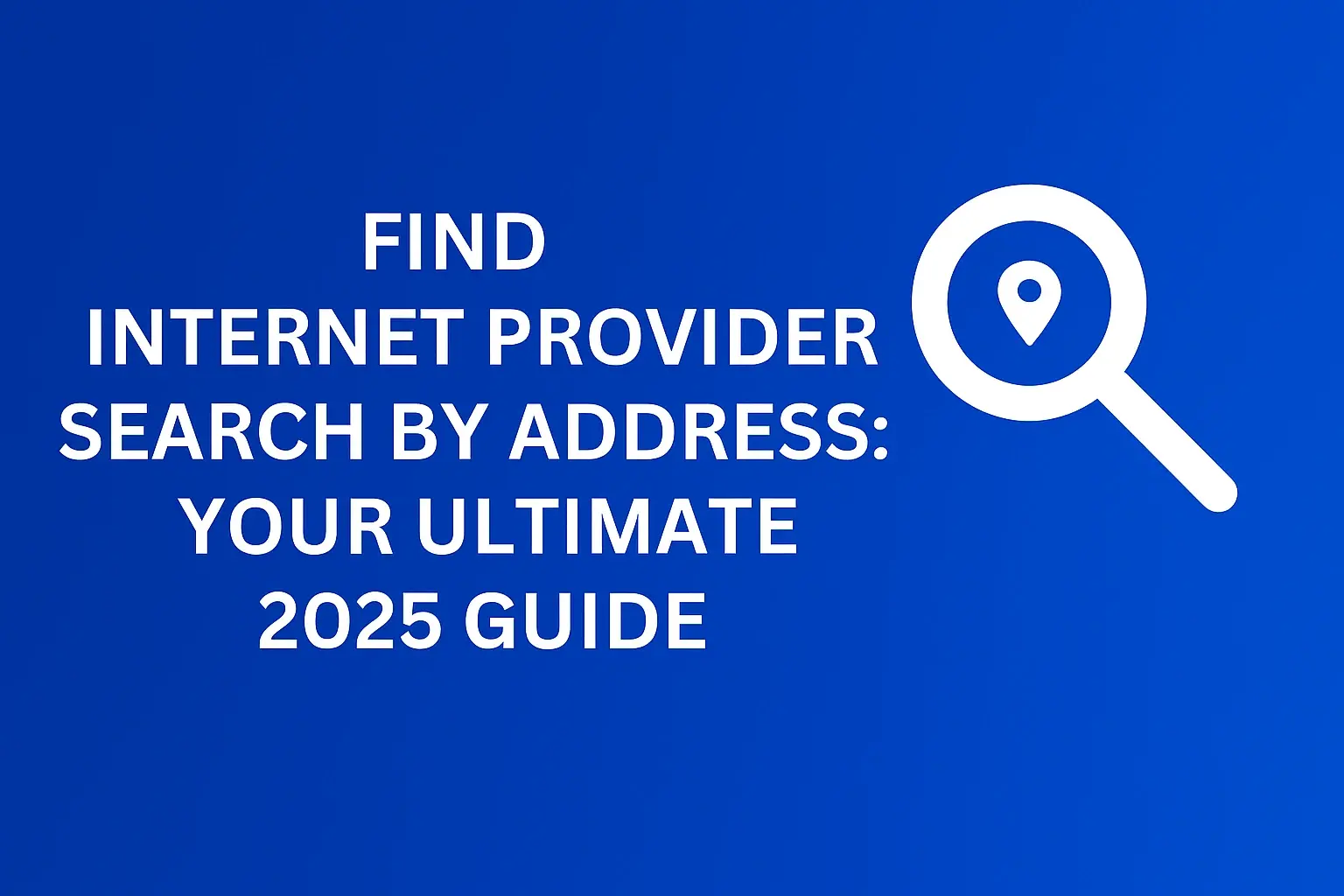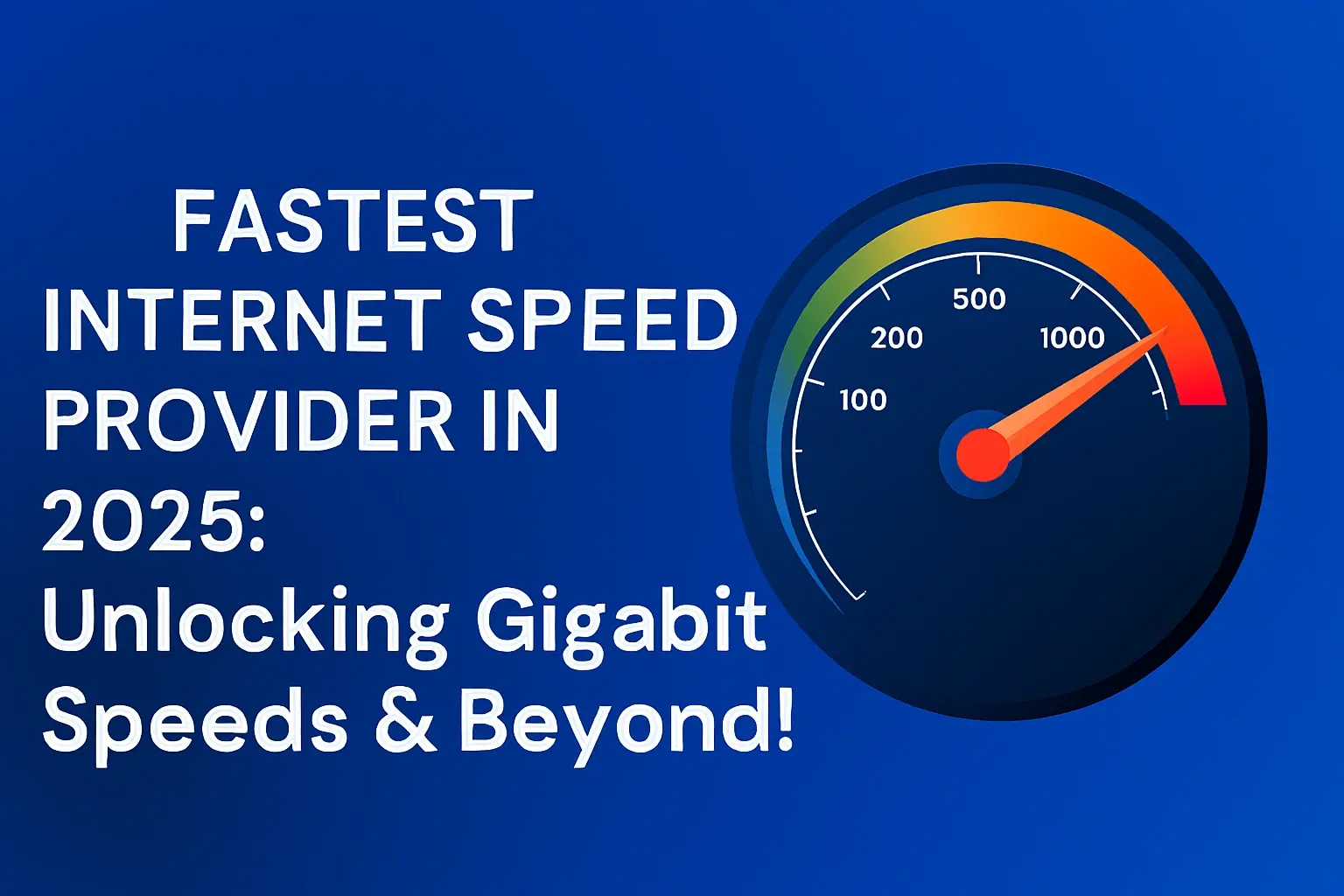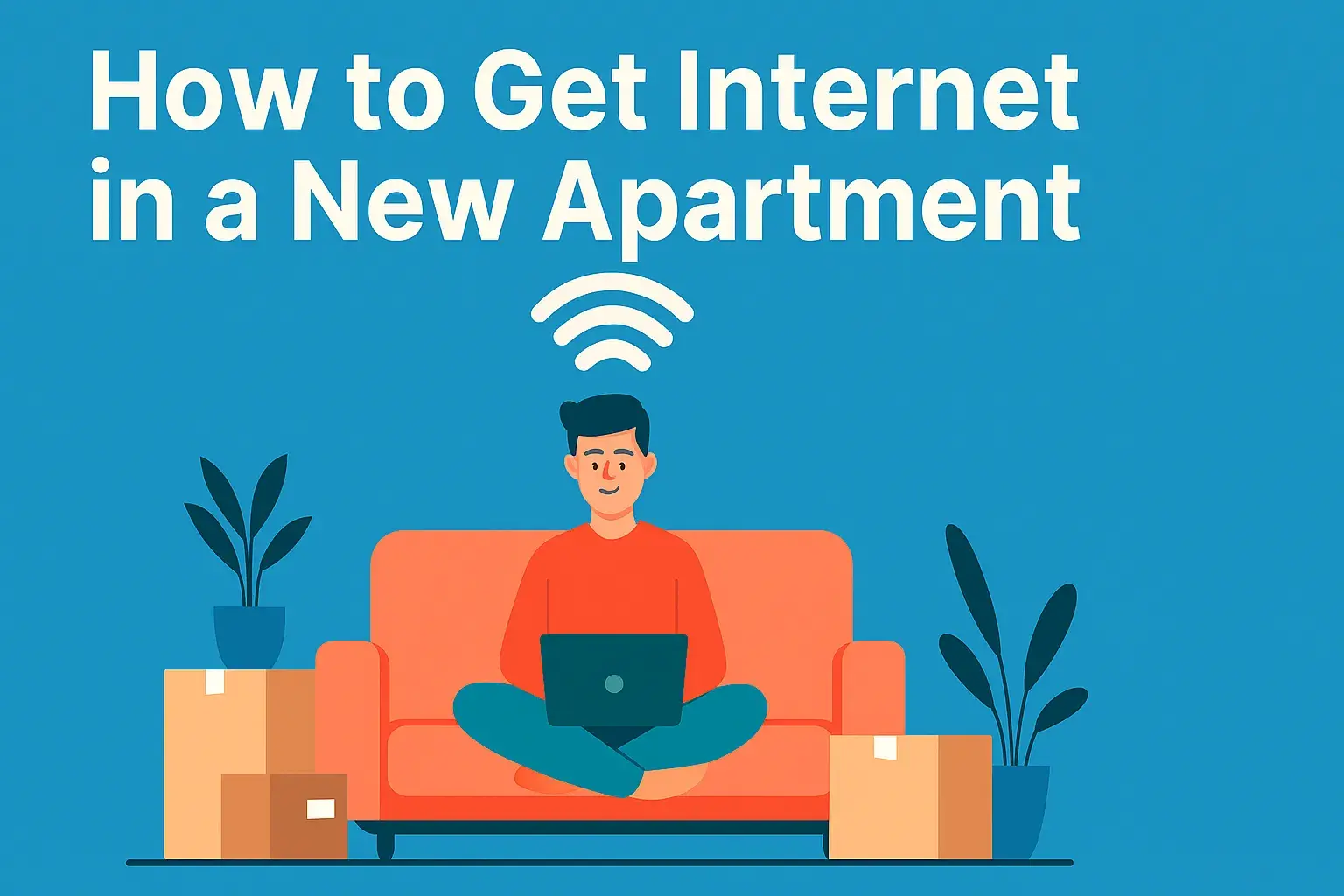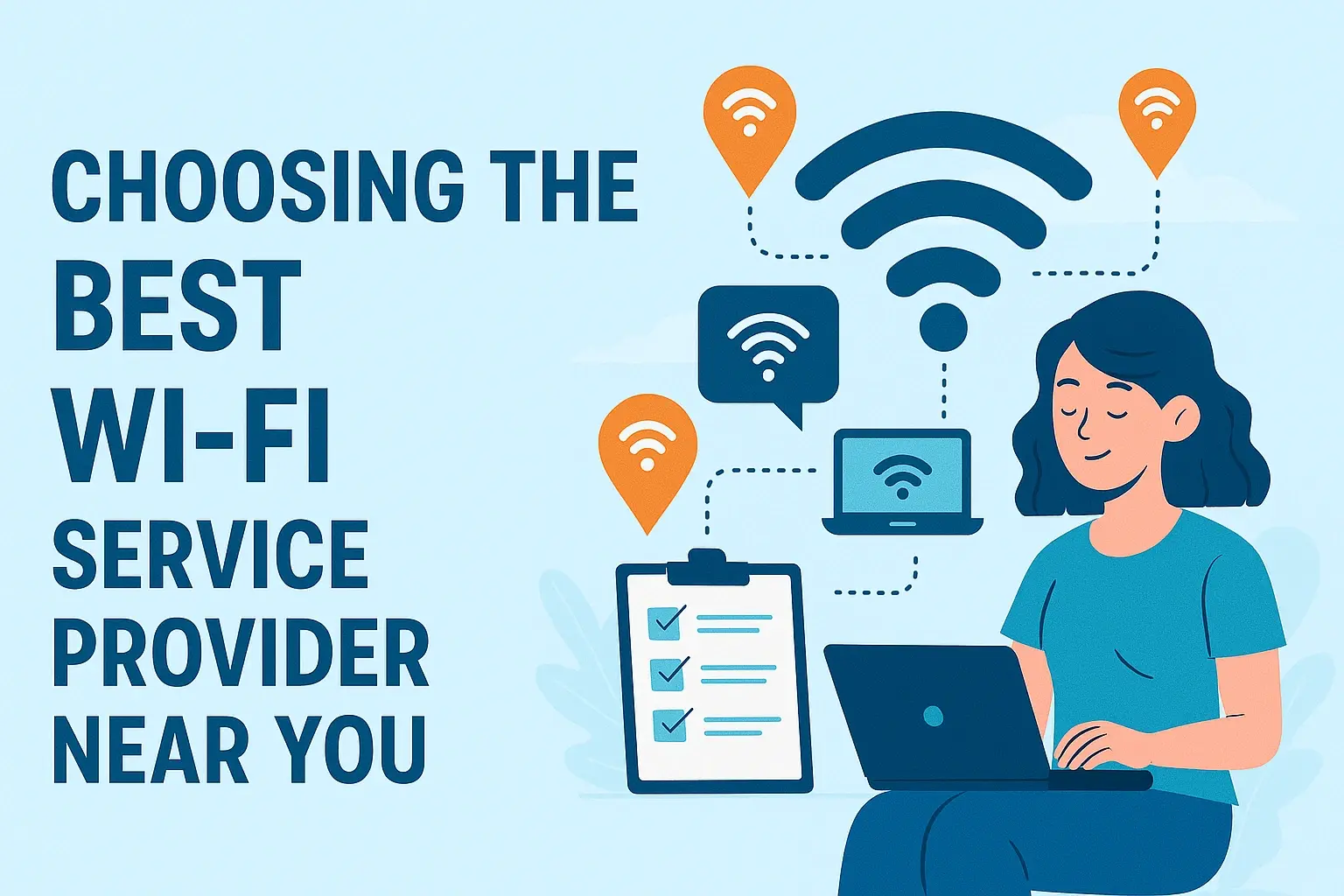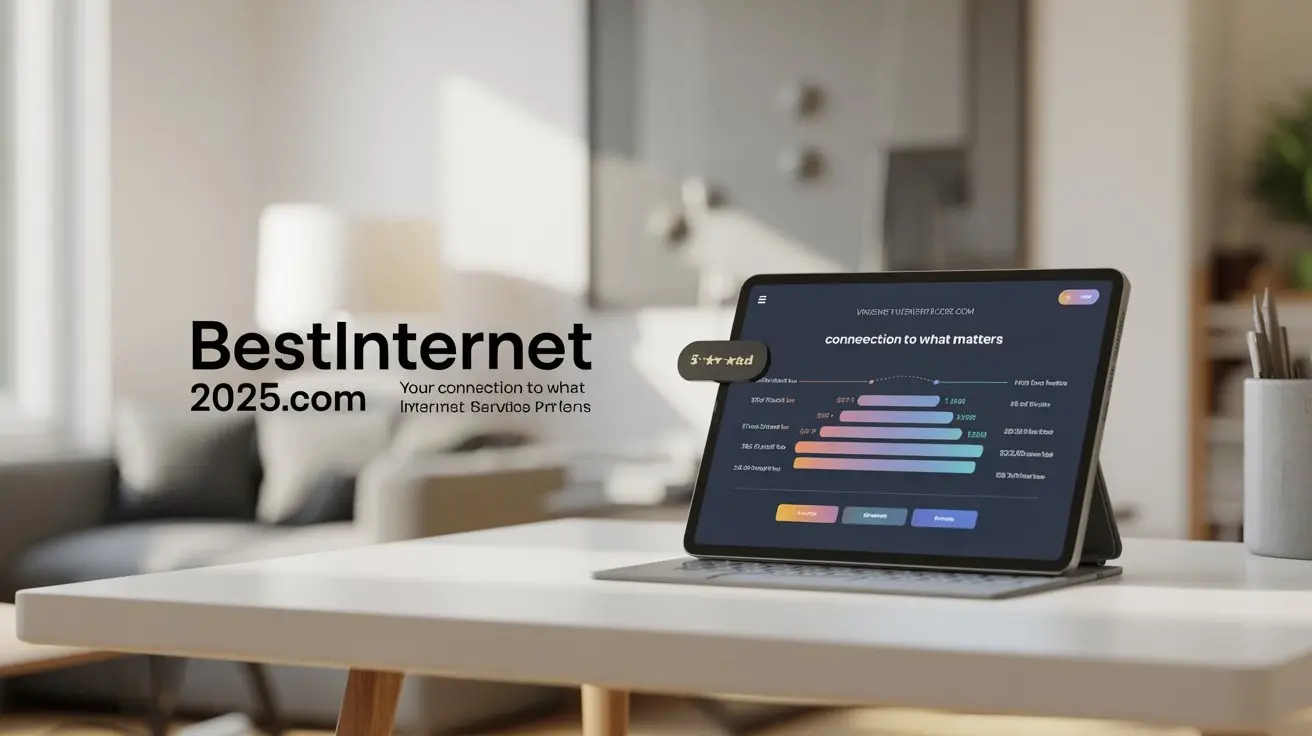Options For Internet Service Without A Phone Plan
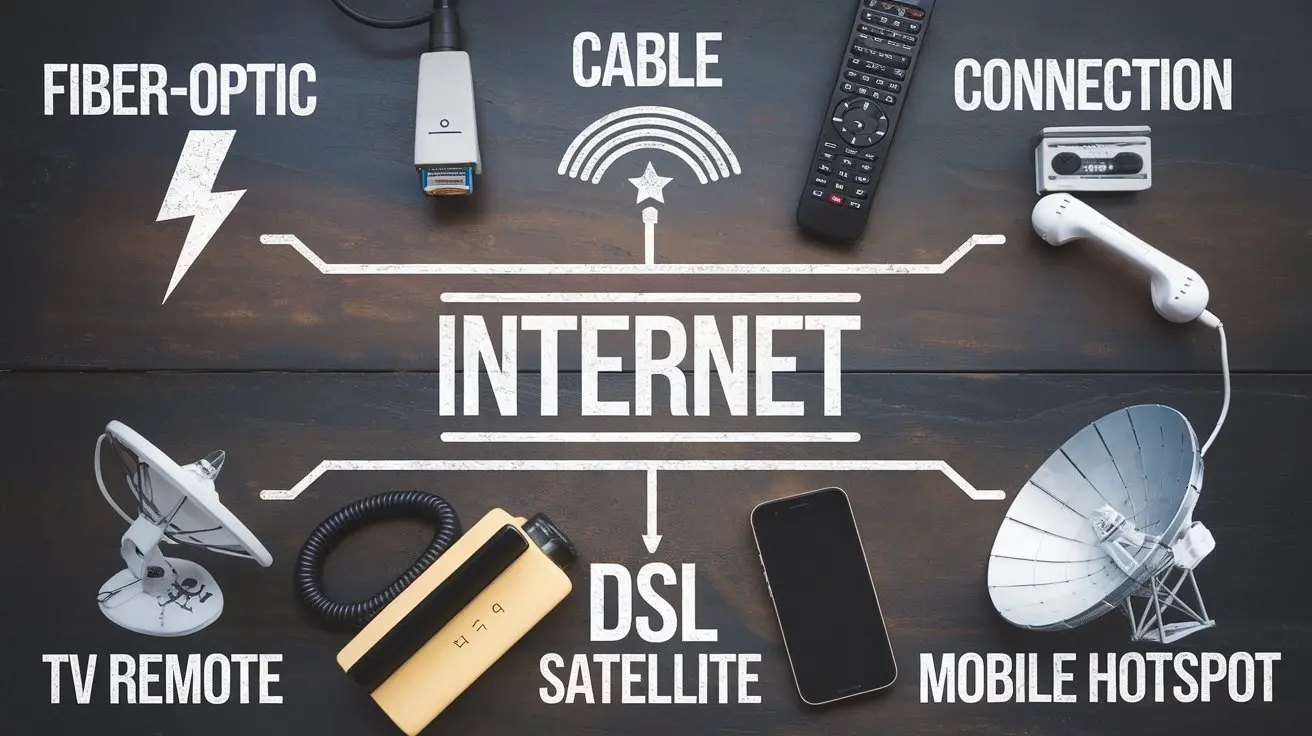
Tired of bundled phone and internet packages? Discover the best options for internet service without a phone plan, giving you freedom and savings. This guide explores standalone internet solutions perfect for modern households seeking flexibility and control over their utility bills.
Understanding Standalone Internet Services
In today's digital age, the desire to disconnect from traditional landline phone services while maintaining robust internet connectivity is more prevalent than ever. Many consumers find themselves paying for bundled services they no longer use, leading to unnecessary expenses. The good news is that the market has evolved significantly, offering a plethora of options for internet service without a phone plan. These standalone internet solutions cater to a wide range of needs, from basic browsing to heavy streaming and gaming, all without the commitment to a traditional phone line.
The concept of "bundling" – where internet, phone, and sometimes cable TV were offered together as a package deal – was once the dominant model. This strategy aimed to lock customers into long-term contracts and simplify billing for providers. However, with the rise of Voice over Internet Protocol (VoIP) services, mobile phones, and streaming entertainment platforms, the need for a traditional landline has diminished for a large segment of the population. Consequently, consumers are actively seeking internet-only plans that offer flexibility, cost savings, and the ability to choose their services independently.
Opting for an internet-only plan means you are subscribing solely to broadband internet access. This can come in various forms, each with its own set of advantages and disadvantages. The primary benefit is the elimination of the monthly phone line charge, which can often be a significant portion of a bundled bill. Furthermore, it simplifies your utility management, allowing you to deal with fewer providers and potentially negotiate better rates for each individual service. This guide will delve into the different types of standalone internet services available, help you understand what factors to consider, and provide practical advice for finding and choosing the best fit for your household in 2025.
Types of Internet Service Without a Phone Line
The landscape of internet connectivity is diverse, and fortunately, many of these options do not require a traditional phone line. Understanding the different technologies available is crucial for making an informed decision. Each type offers a unique balance of speed, reliability, availability, and cost.
Fiber Optic Internet
Fiber optic internet is widely considered the gold standard for home internet. It uses thin strands of glass or plastic to transmit data as pulses of light, offering incredibly high speeds and low latency. Fiber connections are symmetrical, meaning upload speeds are as fast as download speeds, which is ideal for video conferencing, uploading large files, and online gaming. Importantly, fiber optic internet is a completely separate infrastructure from traditional phone lines and does not require a phone jack for installation. It's a pure data service.
Pros:
- Extremely high speeds (up to 1 Gbps and beyond).
- Low latency, ideal for real-time applications.
- Symmetrical upload and download speeds.
- Highly reliable and less susceptible to weather interference.
- Does not require a phone line.
Cons:
- Availability is limited, primarily in urban and suburban areas.
- Installation can sometimes be more complex and costly.
Cable Internet
Cable internet is one of the most common and widely available high-speed internet options. It utilizes the same coaxial cable network that delivers cable television. While it shares the infrastructure with TV, it operates on different frequencies and does not necessitate a phone line. Cable internet offers good download speeds, though upload speeds are typically much lower than download speeds. It's a robust option for most households, supporting streaming, browsing, and moderate gaming.
Pros:
- Widely available in most populated areas.
- Good download speeds, suitable for most online activities.
- Does not require a phone line.
- Often bundled with TV, but standalone plans are readily available.
Cons:
- Speeds can fluctuate during peak usage times as the network is shared.
- Upload speeds are generally significantly slower than download speeds.
DSL (Digital Subscriber Line) Internet
DSL internet uses existing copper telephone lines to transmit data. However, this does not mean you need an active phone service. Many providers offer DSL internet as a standalone service, where the line is provisioned solely for data transmission. DSL speeds are dependent on the distance from the provider's central office; the farther away you are, the slower the connection. While not as fast as fiber or cable, it can be a cost-effective option in areas where other high-speed services are unavailable.
Pros:
- Available in many rural and suburban areas where cable or fiber are not.
- Can be more affordable than other options.
- Does not necessarily require an active phone service, though it uses the phone line infrastructure.
Cons:
- Speeds are generally slower than cable or fiber.
- Performance degrades with distance from the provider's equipment.
- Upload speeds are typically very low.
Fixed Wireless Internet
Fixed wireless internet uses radio signals to connect a home or business to a provider's tower. Antennas are installed at both the provider's location and the customer's premises. This technology is a popular choice in rural and underserved areas where wired infrastructure is scarce. Fixed wireless does not rely on phone lines at all. Speeds can vary significantly depending on the provider, equipment, and line of sight to the tower.
Pros:
- Good option for rural areas without wired broadband.
- Does not require phone lines or underground cables.
- Installation can be quicker than wired services.
Cons:
- Performance can be affected by weather conditions and obstructions (trees, buildings).
- Line of sight to the provider's tower is often required.
- Speeds and reliability can be inconsistent.
Satellite Internet
Satellite internet is another solution for remote locations. It works by transmitting data via a satellite dish installed at your home to a satellite in orbit, which then relays the signal to a ground station. Like fixed wireless, it's a viable option where other services are unavailable. However, it is known for higher latency and often comes with data caps.
Pros:
- Available virtually anywhere with a clear view of the sky.
- Does not require any wired infrastructure to your home.
Cons:
- High latency, making it unsuitable for real-time gaming or frequent video calls.
- Often comes with strict data caps and slower speeds compared to other technologies.
- Susceptible to weather interference.
- Can be the most expensive option per gigabyte of data.
Mobile Hotspots and 5G Home Internet
With the advancement of mobile networks, 5G home internet has emerged as a compelling standalone option. Providers use their 5G cellular network to deliver internet directly to your home via a wireless gateway device. This eliminates the need for traditional phone lines or cable installations. Mobile hotspots, while primarily for on-the-go use, can also serve as a backup or even a primary internet source for very light users, though they are typically limited by data caps and performance can be inconsistent.
Pros:
- Easy setup and often no installation required.
- Potentially faster speeds than DSL or some fixed wireless options.
- No phone line dependency.
- Competitive pricing in some areas.
Cons:
- Availability is growing but still limited to areas with strong 5G coverage.
- Speeds can vary based on network congestion and signal strength.
- Data caps may apply, though some offer unlimited plans.
- Mobile hotspots are generally not suitable for heavy usage due to data limits and potential throttling.
Key Factors to Consider When Choosing
Selecting the right internet service without a phone plan involves more than just looking at advertised speeds. Several critical factors will influence your experience and satisfaction. By carefully evaluating these elements, you can ensure you choose a service that meets your household's specific needs and budget.
Speed Requirements
Your internet speed needs depend heavily on how you use the internet. For basic web browsing, email, and occasional social media, lower speeds (e.g., 25-50 Mbps) might suffice. However, if you stream high-definition video content, play online games, have multiple devices connected simultaneously, or work from home requiring video conferencing, you'll need higher speeds (100 Mbps or more). For households with heavy users or many connected devices, speeds of 300 Mbps, 500 Mbps, or even 1 Gbps might be necessary. Always consider both download and upload speeds; asymmetrical speeds (where uploads are much slower) can be a bottleneck for content creators or those frequently uploading large files.
Data Caps and Overage Charges
Many internet plans, especially satellite and some fixed wireless or mobile-based services, come with data caps. These are limits on the amount of data you can download or upload per month. Exceeding these caps can result in extra charges, significantly higher per-gigabyte costs, or throttled speeds. For households that stream a lot of video, download large files, or play online games, data caps can be a major constraint. Look for plans with unlimited data or generous data allowances if this is a concern. Fiber and cable internet plans are more likely to offer unlimited data.
Contract Length and Early Termination Fees (ETFs)
Some internet providers require you to sign a contract, typically for 12 or 24 months. While these contracts might sometimes offer a lower introductory price, they often come with substantial early termination fees if you decide to switch providers before the contract ends. Many internet-only providers, especially newer ones or those offering fixed wireless and 5G home internet, offer month-to-month plans with no contracts. These provide greater flexibility, allowing you to change services without penalty if your needs change or a better option becomes available. Always read the fine print regarding contract terms and ETFs.
Equipment Costs
You'll likely need a modem and/or router to connect to your internet service. Some providers include this equipment for free, especially with longer-term contracts. Others may require you to rent the equipment on a monthly basis, which can add to your overall cost over time. In some cases, you may have the option to purchase your own compatible equipment, which can be more cost-effective in the long run. Check the provider's policy on equipment rental fees and whether you can use your own devices.
Reliability and Uptime
The reliability of your internet connection is paramount. Downtime can disrupt work, entertainment, and communication. Fiber optic internet is generally the most reliable, followed by cable. DSL and fixed wireless can be affected by distance and environmental factors, respectively. Satellite internet is most susceptible to weather. Online reviews, consumer reports, and local community feedback can provide insights into a provider's historical reliability and customer service in your specific area. Look for providers that offer a service level agreement (SLA) guaranteeing a certain percentage of uptime.
Customer Service and Technical Support
When issues arise, prompt and effective customer service is essential. Research a provider's reputation for customer support. Are they accessible 24/7? Do they offer support via phone, chat, or email? What are customer reviews saying about their responsiveness and ability to resolve problems? Poor customer service can turn a minor inconvenience into a major frustration, so it's worth considering this factor alongside speed and price.
Installation Process and Fees
Understand what the installation process entails. Some services, like 5G home internet or mobile hotspots, may require minimal to no professional installation. Others, like fiber or cable, might require a technician visit and potentially drilling or trenching. Inquire about any installation fees associated with the service. Some providers offer free installation as a promotional incentive, while others charge a one-time fee.
Provider Reputation and Reviews
Before committing, research the provider's overall reputation. Look for independent reviews from sources like the Better Business Bureau (BBB), consumer advocacy groups, and tech review websites. Pay attention to customer feedback regarding billing accuracy, service quality, and the handling of complaints. Local forums or social media groups can also offer candid insights from people in your immediate area who are using the service.
How to Find Providers in Your Area
Finding the best internet service without a phone plan requires a targeted approach to identify providers available at your specific address. The availability of different internet technologies varies significantly by location, from densely populated urban centers to remote rural landscapes.
Online Availability Checkers
The most straightforward method is to use online availability checkers. Most major internet service providers (ISPs) have a tool on their website where you can enter your address or ZIP code to see which of their services are offered in your area. Many third-party comparison websites also aggregate this information, allowing you to compare multiple providers simultaneously by inputting your location.
Steps:
- Visit the websites of major ISPs (e.g., Spectrum, Cox, Verizon, AT&T, Xfinity, CenturyLink, Frontier).
- Locate their "Check Availability" or "Find Services" tool.
- Enter your full street address.
- Review the list of available internet technologies and plans.
Utilize Third-Party Comparison Websites
Several reputable websites specialize in comparing internet plans from various providers. These sites can be invaluable for getting a broad overview of your options. They often allow you to filter by technology type, speed, price, and whether a phone line is required. Some popular comparison sites include:
- BroadbandNow
- HighSpeedInternet.com
- Allconnect
- Reviews.org
When using these sites, always double-check the information directly with the provider, as availability and pricing can change rapidly.
Consider Local and Regional Providers
Don't overlook smaller, regional ISPs or municipal broadband initiatives. In some areas, these providers may offer competitive pricing or superior service, especially in underserved or rural communities. A quick search for "[Your City/County] internet providers" can help uncover these local options. They might specialize in technologies like fixed wireless or have their own fiber networks.
Inquire with Neighbors and Community Forums
Word-of-mouth can be a powerful tool. Ask your neighbors which internet providers they use and what their experience has been. Local online forums, community groups on social media, or even local government websites might have discussions or recommendations regarding internet services in your area. This can provide real-world insights into reliability and customer service that national comparison sites might miss.
Check for Specific "Internet-Only" or "Bundled" Options
When you find providers in your area, be sure to specifically look for their "internet-only" plans. Some providers might heavily promote bundles, but their standalone internet offerings are often just as good, if not better, when unbundled. Pay close attention to whether a plan explicitly states it requires a phone line or if it's a pure data service.
Understanding Availability Limitations
It's important to understand why certain services aren't available. Fiber optic and cable internet require extensive physical infrastructure. DSL relies on existing copper phone lines. Fixed wireless and satellite are often the only options for areas lacking this wired infrastructure. If you're in a very remote location, your choices might be limited to satellite or potentially a high-speed mobile data plan if cellular coverage is strong.
Comparing Popular Providers (2025 Snapshot)
The internet service provider (ISP) market is dynamic, with providers constantly updating their offerings, speeds, and pricing. Here's a snapshot of some prominent providers in 2025 that offer excellent options for internet service without a phone plan, focusing on their general strengths and typical offerings. Keep in mind that availability and specific plans vary by location.
Fiber Optic Providers
Google Fiber: Known for its exceptionally fast symmetrical speeds (up to 2 Gbps) and competitive pricing. Google Fiber is expanding its footprint, but availability is still limited to select cities. They are a pure internet provider, meaning no phone service is bundled or required.
Verizon Fios: Offers gigabit speeds with symmetrical upload/download capabilities. Fios is a popular choice for its reliability and speed, and it's a fiber-to-the-home service that doesn't require a phone line. Standalone internet plans are readily available.
AT&T Fiber: Provides multi-gigabit speeds with symmetrical performance. AT&T Fiber is expanding rapidly and offers plans that are strictly internet-only, with no phone service requirement.
Other Regional Fiber Providers: Many local and regional companies are investing heavily in fiber networks. Examples include Ting, Sonic, and various municipal broadband projects. These often provide excellent value and service.
Cable Internet Providers
Xfinity (Comcast): One of the largest cable providers, offering a wide range of speeds up to 1.2 Gbps or higher in some areas. Xfinity offers numerous internet-only plans. Be mindful of potential data caps on some plans, though unlimited options are usually available for an extra fee or on higher-tier plans.
Spectrum (Charter Communications): Another major player, Spectrum generally offers unlimited data on all its plans, which is a significant advantage. Speeds typically range from 100 Mbps to over 1 Gbps. They also provide standalone internet packages.
Cox Communications: Similar to Xfinity and Spectrum, Cox offers a variety of cable internet plans with good speeds. They provide internet-only options and are a solid choice where available. Data caps may apply to some plans.
Other Regional Cable Providers: Numerous smaller cable companies operate in specific regions, often providing competitive standalone internet services.
DSL and Fixed Wireless Providers
CenturyLink (Lumen Technologies): Offers both DSL and fiber internet in different areas. Their DSL plans are a viable option where fiber is not available, though speeds are generally lower. They also provide standalone internet services.
Frontier Communications: Operates a mix of DSL and fiber networks. Their fiber offerings are competitive, while their DSL services can be a budget-friendly choice in areas with limited options. Standalone internet is their focus.
T-Mobile Home Internet & Verizon 5G Home Internet: These are leading providers of 5G home internet. They leverage their cellular networks to deliver broadband directly to homes, often with unlimited data and no contracts. Speeds can be comparable to cable in good coverage areas. They are inherently internet-only services.
HughesNet & Viasat: These are the primary satellite internet providers. They are typically the only option for very remote locations but come with significant drawbacks like high latency and data caps. They are purely internet services.
Local Fixed Wireless Providers: Many smaller companies specialize in fixed wireless, particularly in rural and suburban areas. These can offer competitive speeds and often no data caps or contracts, but availability is highly localized.
Key Considerations for 2025:
- 5G Home Internet Growth: Expect continued expansion and improvement of 5G home internet services, making them a strong contender against cable in many areas.
- Fiber Expansion: Investments in fiber infrastructure are ongoing, increasing availability of these high-speed, reliable services.
- Data Cap Trends: While some providers are moving towards unlimited data (like Spectrum), others may continue to implement or maintain data caps, especially on lower-tier plans. Always verify the data policy.
- Bundling De-emphasis: The trend away from mandatory phone bundles is accelerating, with more providers offering flexible, internet-only packages.
When researching, always use your specific address to get the most accurate information on available plans, speeds, and pricing from each provider.
Tips for Saving Money on Internet-Only Plans
Cutting the cord on your phone service and opting for an internet-only plan is already a great step towards saving money. However, there are several additional strategies you can employ to ensure you're getting the best possible deal and minimizing your monthly expenses. Being a savvy consumer can lead to significant savings over time.
Negotiate with Providers
Don't be afraid to negotiate. Many providers, especially cable companies, have promotional pricing for new customers that can last for a set period (e.g., 12 months). When that period ends, your bill will likely increase. Call your provider before your promotional period expires and ask if there are any new promotions or plans you can switch to. Mentioning competitor offers can also be a strong negotiating tactic. Even if you're a new customer, asking about introductory offers can secure a lower rate from the start.
Compare Plans Regularly
The internet market is competitive. Prices and plans change frequently. Make it a habit to compare your current plan with what competitors are offering at least once or twice a year. Use comparison websites and check provider sites directly. If you find a better deal elsewhere, you can either switch or use that information to negotiate a better rate with your current provider.
Choose the Right Speed Tier
It's easy to get caught up in the allure of the fastest speeds, but often, you don't need them. Accurately assess your household's internet usage. If you primarily browse the web, check email, and use social media, a lower-speed plan (e.g., 50-100 Mbps) might be perfectly adequate and significantly cheaper. Only opt for higher speeds if your usage patterns genuinely demand it (e.g., multiple simultaneous HD streams, heavy online gaming, frequent large file uploads/downloads). Avoid paying for speed you won't use.
Avoid Unnecessary Equipment Rentals
Modem and router rental fees can add up to $10-$20 or more per month. If the provider allows you to use your own compatible equipment, this can save you a substantial amount over the life of your service. Before purchasing your own modem or router, ensure it's compatible with your provider's network and meets the speed requirements of your plan. Check the provider's website for a list of approved devices.
Look for Bundles (Carefully)
While the focus is on internet-only, sometimes providers offer discounts if you bundle internet with other services they provide, like mobile phone plans or streaming TV packages. If you genuinely need these other services, a carefully constructed bundle might offer savings compared to subscribing to each service separately. However, be wary of being upsold on services you don't need just to get a discount.
Check for Discounts and Promotions
Many providers offer discounts for specific groups, such as military personnel, students, or low-income households (e.g., through the Affordable Connectivity Program, though its future is uncertain). Always ask about any available discounts when signing up or when calling to negotiate. Keep an eye out for limited-time promotions, especially around holidays or major sporting events.
Be Wary of Data Caps and Overage Fees
If your plan has data caps, monitor your usage closely. Exceeding data limits can lead to hefty overage charges that negate any savings. If you find yourself consistently approaching your data cap, it might be more cost-effective to upgrade to a plan with a higher data allowance or unlimited data, even if it seems more expensive upfront. Unlimited data plans from providers like Spectrum or T-Mobile/Verizon 5G Home Internet can offer peace of mind and predictable billing.
Consider Month-to-Month Plans
While contract plans might offer lower introductory rates, they can penalize you with hefty early termination fees if you need to switch. Month-to-month plans offer flexibility. If you find a better deal or your needs change, you can switch without incurring penalties. The slightly higher monthly cost of a no-contract plan can be worth the freedom it provides.
Review Your Bill Regularly
Don't just set it and forget it. Take a few minutes each month to review your internet bill. Check for any unexpected charges, price increases that weren't communicated, or fees you don't recognize. If you spot an error, contact the provider immediately to get it resolved.
Common Misconceptions and Solutions
When transitioning to internet service without a phone plan, consumers often encounter misconceptions or uncertainties. Addressing these proactively can help ensure a smooth and satisfactory experience. Understanding the reality behind these common beliefs is key to making the best choice.
Misconception 1: "I need a phone line for my internet to work."
Reality: This is largely outdated. While DSL internet uses the existing copper telephone line infrastructure, it does not require an active phone service. Providers can provision the line solely for data. Technologies like fiber optic, cable, fixed wireless, and 5G home internet are entirely separate infrastructures and do not use or require phone lines at all.
Solution: When inquiring about DSL, explicitly ask for an "internet-only" DSL plan. For fiber, cable, fixed wireless, or 5G, confirm that no phone line is needed, which is standard for these technologies.
Misconception 2: "Standalone internet plans are always more expensive than bundles."
Reality: This used to be more common, but the market has shifted. Many providers now offer competitive standalone internet plans, and by unbundling, you often save money by not paying for a phone service you don't use. Bundles are designed to be attractive, but the individual cost of the internet component within a bundle might be higher than a standalone plan.
Solution: Always compare the price of a standalone internet plan with the internet portion of a bundle. Use online comparison tools and directly ask providers for their internet-only pricing. You might find that unbundling leads to savings.
Misconception 3: "If I don't have a phone line, I can't get internet in rural areas."
Reality: While traditional wired infrastructure might be lacking in rural areas, there are excellent alternatives that don't require phone lines. Fixed wireless and satellite internet are specifically designed for remote locations. Furthermore, the expansion of 5G mobile networks is bringing high-speed internet options to many rural communities.
Solution: Explore fixed wireless providers, satellite internet (like HughesNet or Viasat), and 5G home internet services. Check availability for these options in your specific rural address.
Misconception 4: "All internet-only plans have strict data caps."
Reality: This is not universally true. While satellite and some fixed wireless plans often come with data caps, many cable and fiber optic providers offer unlimited data on their plans. 5G home internet from major carriers often includes unlimited data as well.
Solution: When comparing plans, pay close attention to the data allowance. Look for plans explicitly stating "unlimited data" or with a very high data cap that exceeds your household's typical monthly usage. If data caps are a concern, prioritize providers and plan types known for unlimited data.
Misconception 5: "I have to sign a long-term contract for the best price."
Reality: While contracts can offer lower introductory rates, many providers now offer flexible month-to-month plans, especially for internet-only services. These plans provide freedom and avoid early termination fees.
Solution: Actively seek out providers and plans that offer month-to-month agreements. If a provider insists on a contract, carefully weigh the savings against the potential penalties if you need to switch later. Read the contract terms thoroughly.
Misconception 6: "DSL is too slow to be useful today."
Reality: While DSL is generally slower than fiber or cable, its usefulness depends on your needs. For basic internet tasks like email, web browsing, and social media, DSL can still be perfectly adequate, especially if it's the most affordable or only option available. Some providers offer enhanced DSL services that can reach respectable speeds.
Solution: If DSL is your only wired option, check the maximum speeds offered by providers in your area. If it meets your basic needs and budget, it can be a viable solution. However, if you require higher speeds for streaming or gaming, explore other technologies.
Conclusion
Navigating the options for internet service without a phone plan in 2025 is more straightforward than ever, thanks to a market that increasingly prioritizes flexibility and consumer choice. You no longer need to be tied to a landline to access reliable and fast internet. Whether you're in a bustling city or a remote rural area, there's a high probability that a suitable internet-only solution exists for you. From the lightning-fast speeds of fiber optics and the widespread availability of cable internet to the innovative reach of 5G home internet and the rural-focused fixed wireless and satellite options, the choices are diverse.
The key to securing the best plan lies in understanding your household's specific needs—speed requirements, data usage, and budget—and then diligently researching providers available at your address. Always compare speeds, data caps, contract terms, equipment costs, and customer service reputations. Don't hesitate to negotiate with providers or explore newer technologies like 5G home internet, which are rapidly changing the landscape of home broadband. By making an informed decision, you can enjoy robust internet connectivity while shedding the unnecessary costs and complexities of a traditional phone bundle, ultimately achieving a more streamlined and cost-effective digital life.
